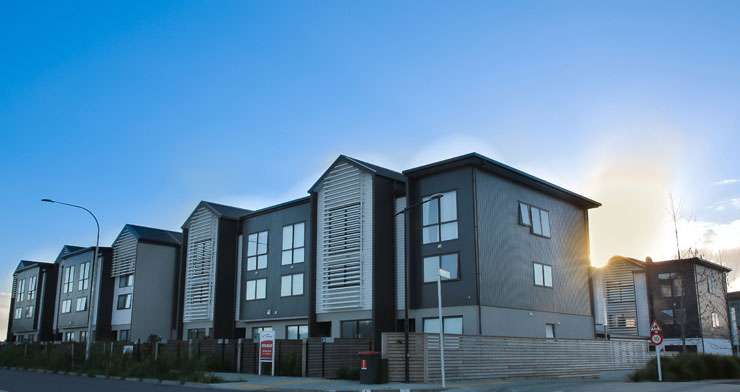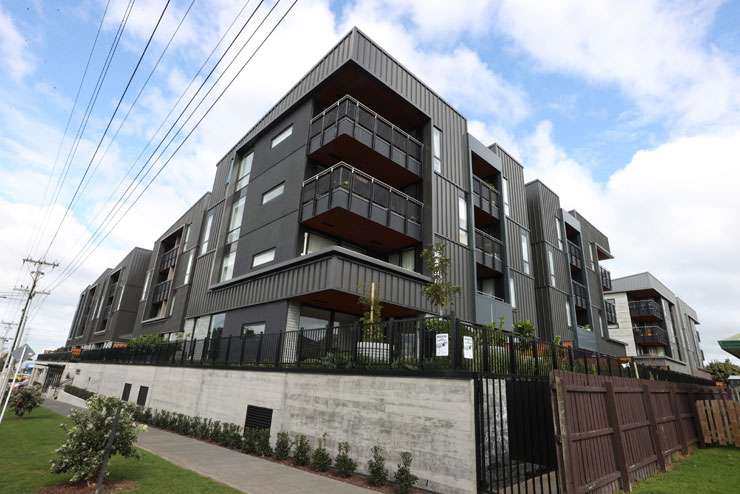New build homes are adding desperately needed supply to our housing market. They are also lifting the average quality of our ageing housing stock by using modern construction materials and techniques that make homes warm and dry all year round. The more people buy into new homes, the more new development can proceed, which ultimately makes our housing stock more varied and more affordable.
The Auckland Unitary Plan has been a gamechanger in allowing more housing development across Auckland, as well as more variety. Apartments and terraced houses are popping up across the entire region, offering a range of price points. Let’s take a closer look at the types of new housing that are commonplace in today’s development sector.
Houses
Start your property search
Standalone houses one or two storeys high make up the bulk of existing housing stock in Auckland, but demographic and societal change mean this typology is probably going to be oversupplied in the future. This is one reason that the year to June 2021 saw a record low 36 per cent of dwelling consents being for houses.
Back in the day when each household had a mum, a dad, 2.4 kids and a suburban dream, standalone housing was ideal. In today’s world, people are living longer, they are having fewer children and they have a different lifestyle to that of their parents.
There is not a lot of development-ready land in the existing urban area for standalone dwellings, with most occurring on the outskirts of the urban area where lower land values and a lack of public transport make this typology best suited. The locations of new-build houses in Auckland tend to mean a big commute, which can be unappealing.
Terraced Housing
Terraces are horizontally attached dwellings, sometimes referred to as ‘row houses’. The end terraces tend to be the more expensive of the group as they have larger yards and windows on three sides. The middle terraces tend to be the cheaper options as they share walls with neighbours on each side.
Terraces have wide appeal, generally. They are slightly denser than houses but not as dense as apartments. This makes them suitable for areas zoned as Mixed Housing Suburban and Mixed Housing Urban, which happens to be most of Auckland.

Terrace houses are becoming the most common new build option. Photo / New Zealand Herald
Their wide appeal means they are doing the heavy lifting in adding new supply, accounting for 45 per cent of dwelling consents in the year to June 2021. Terraces suit busy couples and young families who like to live in urban locations but don’t want to deal with endless yard maintenance or cannot afford houses in the area they want to be.
Apartments
Apartments are a niche type of housing in the Auckland market, with 38,400 units accounting for just seven per cent of housing stock. But they have grown to that from 24,500 units just 10 years ago.
Most of the stock back then was CBD and/or investor-focused. Not surprisingly, this wasn’t an attractive living option for most people, and as a result apartments got a bit of a bad rap. With the Unitary Plan enabling the denser apartment typology in town centres and around transit nodes, developers started to produce high-quality apartments for owner occupiers, ranging from affordable to mid-market to luxury.

Fabric in Auckland's Onehunga. Apartment living is spreading beyond Auckland CBD. Photo / Fiona Goodall
The benefits of an apartment lifestyle are increasingly being recognised. Efficient use of land means they tend to be the most affordable of the three typologies - single-level living suits people with restricted mobility, and there are safety and security aspects that allow a lock- up-and-leave lifestyle.
The major challenge for all types of new-build housing is balancing the quality and size of the dwelling with its retail price in a location-specific context. Although we would love them to, developers are simply unable to provide large, luxurious dwellings at cheap prices because aside from being a poor business strategy, they won’t get bank finance for a new development unless they can show that it will return a profit.
The large number of inputs in new housing development in New Zealand all combine to result in high development costs. Market prices for land, labour and construction materials are only some of the inputs; you can’t forget the costs associated with development management, sales and marketing, consenting, regulatory and compliance, legal, utilities connections, financing, contingencies and more.
Many cost inputs mean many potential risks for a developer, but also the potential for significant rewards if they do manage to get everything right.

Tamba Carleton: "The major challenge is balancing quality and size with retail price." Photo / Supplied
Developers of new housing in Auckland are well attuned to the market and are providing people with dwellings they want, at prices they can afford. The recent emergence of terraced and apartment housing enabled by the Unitary Plan has had a real impact in bringing our housing stock into the 21st century to suit current and future housing needs.
Going forward, communities will feature a much broader variety of housing than what we have seen in the past. Diversity of housing typologies contributes to healthy communities by giving people the option to live in the areas they want to and at prices they can afford.
- Tamba Carleton is associate director of research at CBRE









